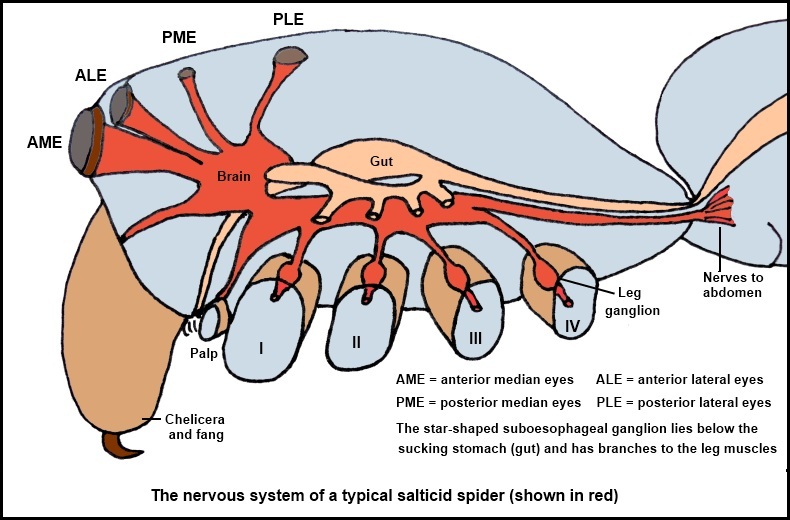Lots, tons even, of research has been done on spiders in general. As with much of reality, the things we humans focus on are often those that catch our eye or make us afraid. Jumping spiders, being the charismatic mini-fauna that they are, are no exception. With that in mind it is no wonder that salticids have been studied so extensively. What may not be readily obvious to most people though, is that the scientists often have other motivating factors as well. For instance, as was discussed in the previous post, salticids are pretty dang odd for a spider and if there is one thing that scientists love to study, it is an exception.
So what have we learned from salticids so far? Well one thing we have definitely learned is that in spite of having a brain that would fit on the head of a pin with room to spare, salticids are actually quite capable learners. In fact, research during the last few decades has shown that salticids are capable of learning from their mistakes in a trial-and-error fashion (Jackson & Wilcox 1993), learning to avoid many different kinds of noxious (unpleasant) stimuli (Skow 2006), and even how to take detours in order to reach a goal(Carducci & Jakob 2000). If that list isn't too impressive sounding, think about how long it can take some dogs to learn a new trick; some spiders show learning after only 2-3 attempts!
 |
| This lovely diagram was borrowed from the "Find a Spider Guide." http://www.findaspider.org.au/info/spiderNS.htm |
We have also learned that the environment a spider is reared in effects how it develops (Carducci & Jakob 2000). While much of what has been learned from salticids is not directly applicable to humans, this particular finding is definitely applicable! For example, using the findings from Carducci and Jakob's study, we can draw inferences about how the environment we raise our children in will effect their future mental development. Not bad for a little spider research!
This list of salticid (and spider) based contributions goes on but suffice to say, these little animals are teaching us quite a lot about our world and how things work within it. My personal research on jumping spiders is about their ability to learn by watching each other. While much of my work is still in progress, I can say that so far, they definitely seem to be among the handful of non-human organisms that are capable of learning this way. Stay tuned for more updates!

